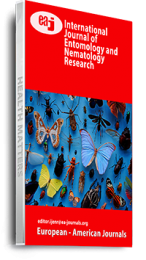The nematicidal effects of different biochar sources and a synthetic nematicide on Root-Knot Nematode (Meloidogyne spp.) egg hatchability and control on mungbean were compared in Petri dishes and pot experiments. Each Petri dish contained 100 eggsml-1 of nematode eggs suspension and were arranged in CRD with six treatments and a control replicated thrice. Treatments included: biochars of bitter leaves, cassava peels, sawdust and poultry waste, a synthetic nematicide (Carbofuran 3G) and tap water (control). Suspension of the biochars and nematicide were applied at 0.1 g/ml and 0.015 g/ml respectively. Eggs hatched were observed for 24, 48 and 72 hours. In the pot experiment, each pot (except the control) was inoculated with 2,000 nematode eggs and was arranged in CRD. Similar treatments as in egg hatchability were used. The biochars and nematicide were applied as powder at 20 g/pot and 3 g/pot respectively. Data collected included: growth parameters, pod and grain yield, shoot and root parameters, nematode galls and population. They were subjected to ANOVA and means were compared using LSD at 5% probability level (P<0.05), using computer software “Genstat Discovery Edition 4”. Results showed that bitter leaves biochar compared favourably with Carbofuran on nematode egg hatchability. Generally, biochars of cassava peels and sawdust compared favourably with nematicide on the control of RKN on mungbean but did not significantly affect yield and nodulation.
Keywords: Biochar, Carbofuran, Meloidogyne spp., Petri dish, Pot experiment, Vigna radiata

